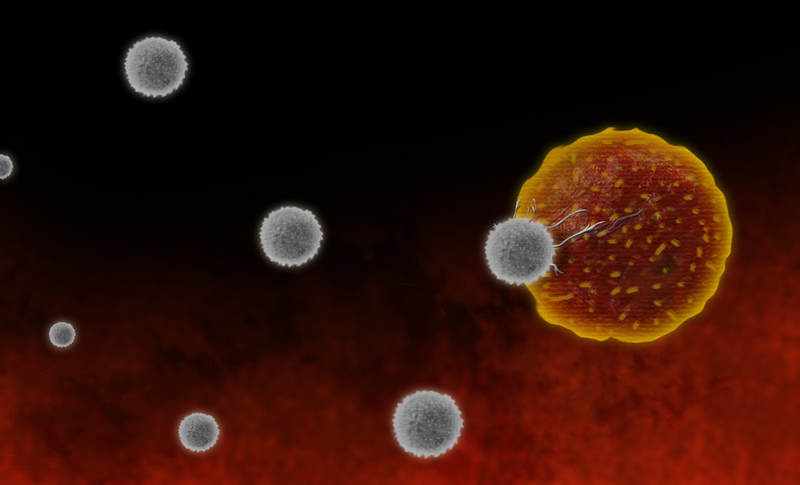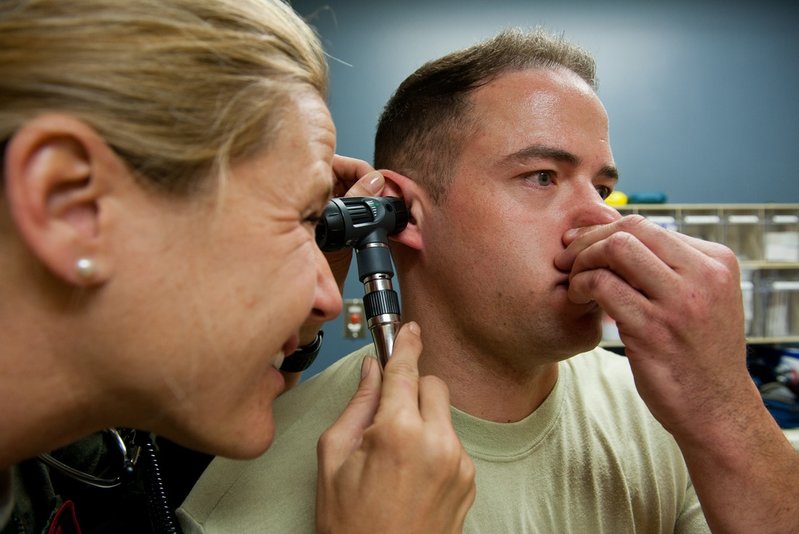T-Cells Can Affect the Behavior of Mice
T-lymphocytes, more commonly known as T-cells, are a subtype of white blood cells that play an integral role in the body’s immune system. They can trigger physical reactions in response to infections, mark and add pathogens to the body’s archive of immunological memory for future reference, or outright destroy harmful bacteria that enter the bloodstream. All these actions are performed with the help of a network of cellular receptors located both in and on the surface of the T-cells, which dictate when the cells activate to induce an immune response or remain passive to carry out daily functions.
However, T-cells are not infallible. If they lack certain receptors, the inner workings of the cell can be thrown out of sync. They can become too active or inactive, which can have detrimental effects on the body. One such receptor, PD-1, regulates the amount of amino acids (the building blocks of proteins) that are synthesized within the T-cell, something that is responsible for how frequently and intensively T-cells interact with other molecules.
A recent study from the RIKEN Center for Integrative Medical Sciences in Japan have found that in mice containing T-cells devoid of the PD-1 receptor, the T-cells become overactivated, and their receptors for cell-mediated immunity increasingly engaged. This hyperactivity abnormally modified the mice’s metabolism, which started a chain effect of molecule synthesis disruption that eventually led to noticeable behavioral changes in the mice.
The researchers compared two groups of mice: one with the PD-1 receptor, and one without. In the mice without the PD-1 receptor, amino acid production in the T-cell skyrocketed. Inversely, there was a significant drop in the amino acids tryptophan and tyrosine in the mice’s bloodstream. Tryptophan and tyrosine are essential amino acid ingredients in the synthesis of dopamine and serotonin, which are both neurotransmitters associated with stimulating emotional pleasure and healthy motor control. A deficiency in those molecules leads to a variety of fear, anxiety, and aggression responses.
The RIKEN scientists put the mice lacking the PD-1 receptor through a series of tests that would measure their emotional-mental state. One test put the mice in a container with alternating areas of darkness and light while another placed them in a micro-sized maze with sections of higher and lower elevation.
However, T-cells are not infallible. If they lack certain receptors, the inner workings of the cell can be thrown out of sync. They can become too active or inactive, which can have detrimental effects on the body. One such receptor, PD-1, regulates the amount of amino acids (the building blocks of proteins) that are synthesized within the T-cell, something that is responsible for how frequently and intensively T-cells interact with other molecules.
A recent study from the RIKEN Center for Integrative Medical Sciences in Japan have found that in mice containing T-cells devoid of the PD-1 receptor, the T-cells become overactivated, and their receptors for cell-mediated immunity increasingly engaged. This hyperactivity abnormally modified the mice’s metabolism, which started a chain effect of molecule synthesis disruption that eventually led to noticeable behavioral changes in the mice.
The researchers compared two groups of mice: one with the PD-1 receptor, and one without. In the mice without the PD-1 receptor, amino acid production in the T-cell skyrocketed. Inversely, there was a significant drop in the amino acids tryptophan and tyrosine in the mice’s bloodstream. Tryptophan and tyrosine are essential amino acid ingredients in the synthesis of dopamine and serotonin, which are both neurotransmitters associated with stimulating emotional pleasure and healthy motor control. A deficiency in those molecules leads to a variety of fear, anxiety, and aggression responses.
The RIKEN scientists put the mice lacking the PD-1 receptor through a series of tests that would measure their emotional-mental state. One test put the mice in a container with alternating areas of darkness and light while another placed them in a micro-sized maze with sections of higher and lower elevation.
Image Source: Etouale
The aberrant mice lacking the PD-1 receptor spent measurably less time in the areas with light and elevated sections of the maze than normal mice. In addition overall, the researchers also found that the oxygen consumption of the aberrant mice was much lower than that of the normal mice. From these measurements, the researchers observed that there was a noted increase in fear and apathy in mice without the PD-1 receptor. As tryptophan and tyrosine concentration decreased, so did the concentrations of dopamine and serotonin, which in turn led to the aberrant mice experiencing a prolonged state of a negative mood.
The fact that T-cells can influence the mood of organisms is especially important because drugs that inhibit the PD-1 receptor are used in immunotherapy, a type of cancer treatment specifically designed to recruit the body’s own immune system to kill cancerous cells. This treatment involves inhibition of the receptor, and due to the resulting T-cell overactivation, can leave patients vulnerable to autoimmune diseases such as gastritis, lupus, and Grave’s disease. With this in mind, more studies are needed to determine how large of a side effect T-cell overactivation has on humans and whether this side effect justifies a discontinuation of certain immunotherapeutic treatments.
The fact that T-cells can influence the mood of organisms is especially important because drugs that inhibit the PD-1 receptor are used in immunotherapy, a type of cancer treatment specifically designed to recruit the body’s own immune system to kill cancerous cells. This treatment involves inhibition of the receptor, and due to the resulting T-cell overactivation, can leave patients vulnerable to autoimmune diseases such as gastritis, lupus, and Grave’s disease. With this in mind, more studies are needed to determine how large of a side effect T-cell overactivation has on humans and whether this side effect justifies a discontinuation of certain immunotherapeutic treatments.
RELATED ARTICLES
|
Vertical Divider
|
Vertical Divider
|
Vertical Divider
|






